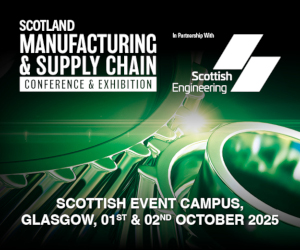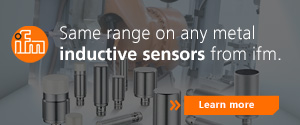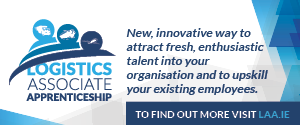Food Safety and UV-Cured Printing Inks : RadTech Europe is a Key Information Provider for Brand Owners and Retailers
 There is much to be said in favour of radiation-curing inks, as world-leading manufacturers of packaging print equipment – and their users — have already discovered. Because UV inks and their EB equivalents cure faster, work throughput is much faster than with traditional print drying tunnels. Just as importantly, UV inks deliver high-quality, crisp, graphics (partly a by-product of their speedy cure, which reduces the ‘dot gain’ flow tendency of liquid inks) at a competitive cost per m2. Perhaps most important of all, they achieve all this without emitting any VOCs, making them an environmentally-friendly alternative to solvent-based inks. RadTech Europe is the industry association focused on the use of radiation curing in a number of manufacturing arenas, and it is proactive in promoting and managing the technology’s future in the field of packaging print.
There is much to be said in favour of radiation-curing inks, as world-leading manufacturers of packaging print equipment – and their users — have already discovered. Because UV inks and their EB equivalents cure faster, work throughput is much faster than with traditional print drying tunnels. Just as importantly, UV inks deliver high-quality, crisp, graphics (partly a by-product of their speedy cure, which reduces the ‘dot gain’ flow tendency of liquid inks) at a competitive cost per m2. Perhaps most important of all, they achieve all this without emitting any VOCs, making them an environmentally-friendly alternative to solvent-based inks. RadTech Europe is the industry association focused on the use of radiation curing in a number of manufacturing arenas, and it is proactive in promoting and managing the technology’s future in the field of packaging print.
Learning lessons
Since the first application of UV inks and coatings in the world of packaging print, the industry has reacted swiftly to market issues and worked diligently to increase the performance and suitability of the technology for use in food packaging, for example through the development of low-migration inks to deal with the potential issue of migration of ink components into food.
Packaging barrier performance
It is a notable fact that, although some of today’s advanced packaging structures may effectively act as a barrier against migration, only two materials – glass and metal — are regarded as absolute barriers. The permeation of possible contaminants through the packaging substrate, including ink migration,may therefore be possible. An additional factor in relation to ink migration is the possibility of ink ‘set-off’. This involves the transfer of ink from the printed side of packaging — when it is stacked for construction or, in the case of printed labels, for automatic application — to its underside (ie the surface which will make contact with the pack contents). Issues like this, along with questions reflecting wider discussions with respect to human exposure to chemicals– are at the heart of RadTech Europe’s consumer safety agenda with UV inks and varnishes.
 RadTech Europe has engaged with the entire packaging print supply chain, from the suppliers of ink raw materials to the end-user brand owners and retailers, and continues to do. A highly-focused pan-European food packaging seminar is planned for the second half of 2014, as part of the association’s proactive ongoing formal and informal communications programme.
RadTech Europe has engaged with the entire packaging print supply chain, from the suppliers of ink raw materials to the end-user brand owners and retailers, and continues to do. A highly-focused pan-European food packaging seminar is planned for the second half of 2014, as part of the association’s proactive ongoing formal and informal communications programme.
Regulatory initiatives
There have been ongoing developments to increase the performance of UV inks for food packaging and ensure their suitability for use and brand owners such as Nestlé have instituted their own company-specific food packaging production standards. Food safety has also been the driver for a raft of regulatory initiatives across Europe providing a framework for the use of inks in food packaging – initiatives that reflect the importance of the issue to all involved in the packaging print supply chain. RadTech Europe and other leading technical associations, including the European printing inks association EuPIA and the European chemical industry council CEFIC, are all actively addressing these concerns in concert with the EU authorities.
Although there is currently no specific EU legislation concerning printing inks in food packaging applications, good manufacturing practice for all materials involved in the production and packaging of food– including inks – are covered by regulation (EC) No 1935/2004 which requires that materials and articles which, in their finished state, are intended to be brought into contact with foodstuffs or which are brought into contact with foodstuffs, must not transfer any components to the packed foodstuff in quantities which could endanger human health, or bring about an unacceptable change in the composition or deterioration in organoleptic properties.
Additionally, the Swiss Ordinance on materials and articles in contact with food – often used as an industry standard — continues to refine a list of permissible substances as knowledge grows; any listed components being subject to specific migration limits. Germany is also in the development stage of its own Ordinance in this respect. RadTech Europe members are contributing their expertise to help establish the highest-possible migration limits for key raw materials, and, together with EuPIA and the CEFIC UVEB Sector Group, have been instrumental in developing REACH dossiers and in compiling migration data for submission under both the Swiss and upcoming German Ordinances. As a direct result, GPOTA and TMPEOTA have been granted higher 50 ppb migration limits, with work on other substances, including a number of commodity photoinitiators, on the way.
 Ink innovation
Ink innovation
EuPIA has developed its own guidelines for the printing industry on the selection of raw material constituents of food packaging inks, which are today the established standard. There is a standard Statement of Composition which EuPIA members will provide to the food printing and packaging chain to confirm that the inks supplied are fit for purpose; and printers are encouraged to conduct their own practical migration tests as appropriate for the types of packaging print they undertake, as a ‘fail safe’ mechanism. The industry continues to innovate, too, with inks demonstrating lower migration levels associated with radiation curing.
RadTech Europe’s President, David Helsby, comments: ‘RadTech Europe’s prime goal is straightforward: to work with all stakeholders to ensure that brand owners can safely use radiation-curable inks in food packaging applications, without endangering the consumer, and enjoy the attendant benefits. Radiation curing has a long and successful history in providing optimal outcomes in many other aspects of manufacturing, including flooring, automotive and electronic components, household appliances, metal cans, and rigid plastics. Food packaging print need not be an exception.’
Further information on RadTech Europe’s ongoing work in the printing inks arena is available via the association’s website, www.radtech-europe.com.


























